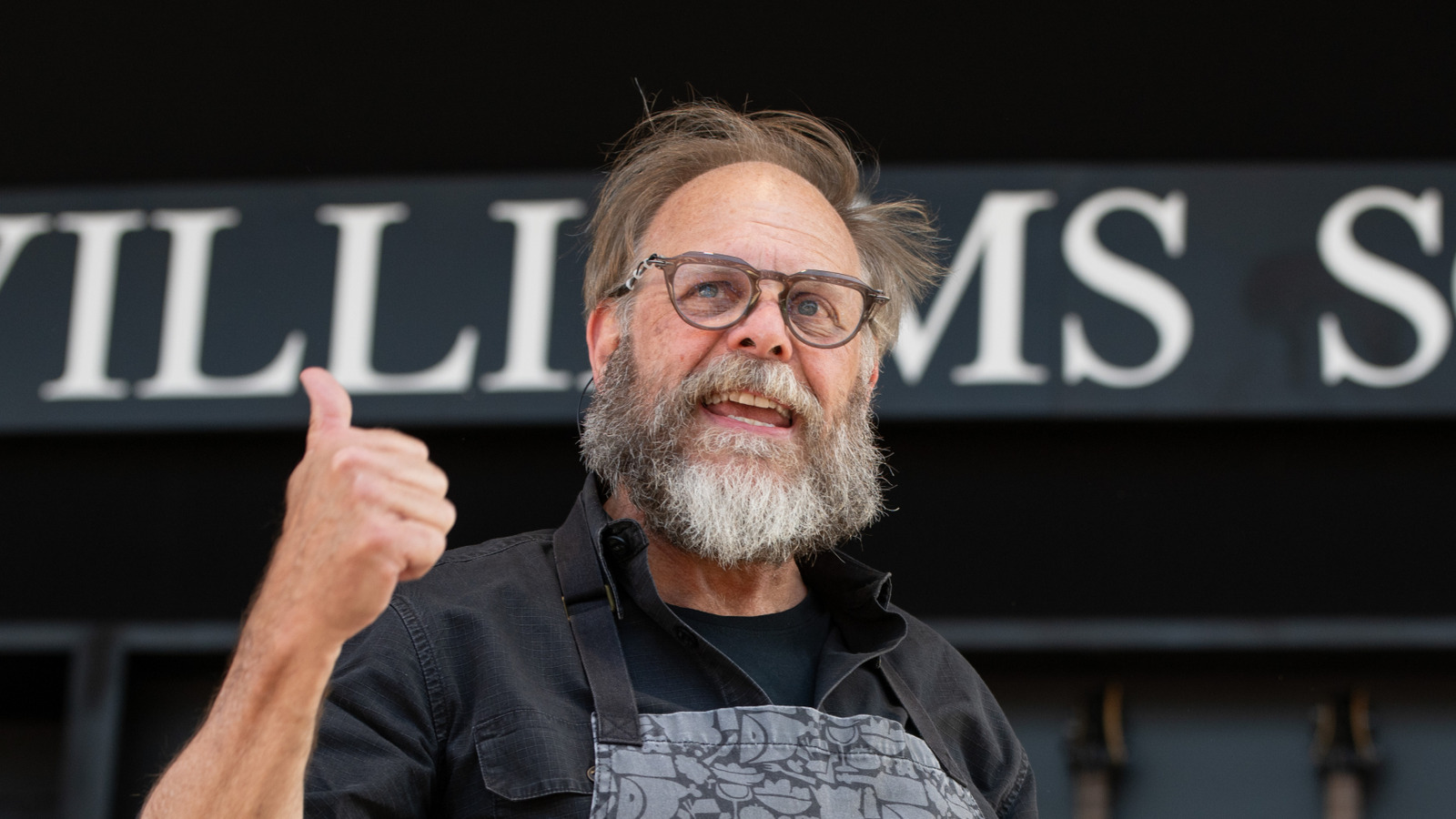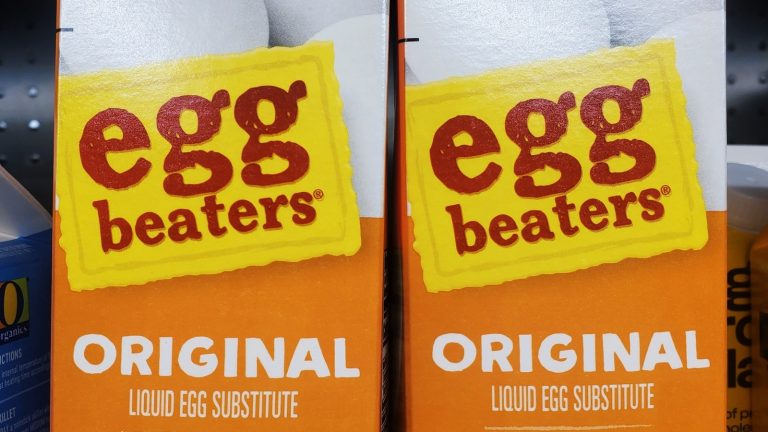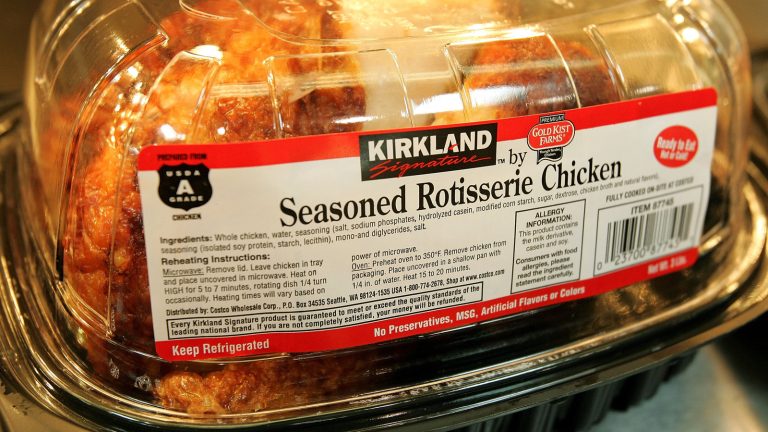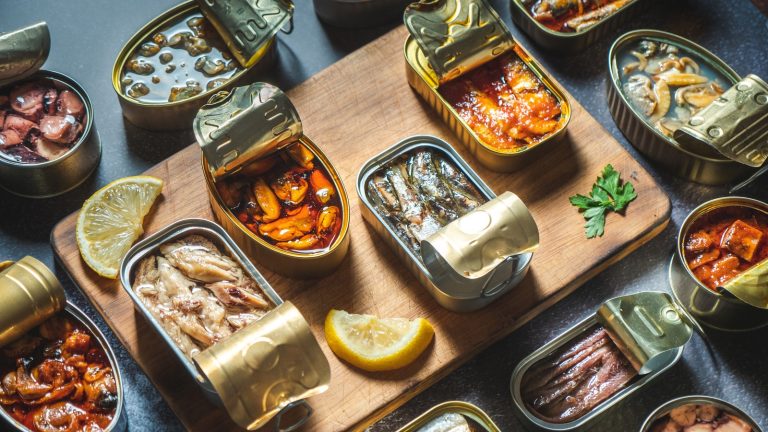Alton Brown has built a reputation as a culinary genius, blending science and fun in his cooking approach. His methodical yet quirky style has helped many home cooks better understand the art of cooking. He’s best known for hosting the long-running Food Network show Good Eats, and he’s celebrated for his unique ability to combine cooking techniques with scientific principles, explaining the “why” behind the “how” of cooking. That scientific approach extends to coffee, an essential part of many people’s daily routines. He has great tricks of the trade on how to brew the perfect cup, and the five essential tips for coffee-making below are eye-opening. Whether you’re a casual coffee drinker or a self-proclaimed coffee snob, Alton’s advice will elevate your brewing game.
Proper coffee storage is key
Freshness is key in coffee, and Alton’s first advice might seem simple but is incredibly important: buy whole beans in small pouches, only purchasing enough for about a week.
Coffee beans are like wine; they lose their optimal flavor once the air gets to them. Even if you keep the bag sealed and store it in a cool, dark place, the beans will only stay fresh for so long. Tightly sealed bags begin to degrade in just a few weeks. Brown emphasizes buying smaller quantities to ensure fresh beans for each brew. (Here are some of the best coffee bean brands to fit all your coffee-making needs.)
Does storing coffee in the fridge or freezer help maintain freshness? It’s the opposite, as condensation causes more harm than good. Instead, buy small batches and consume them quickly for the best taste. So, next time you’re in the store, resist the urge to stockpile those enormous bags of beans — you’ll thank Alton later when your cup of coffee tastes like it was brewed at the moment, not weeks ago.
Grind coffee beans just before brewing
Alton has often compared coffee beans to spices, as they are best used immediately after grinding. Once you grind the coffee, the flavor compounds and oils start to release — and then deteriorate almost immediately. So, grinding your beans just before you brew is crucial if you are particular about coffee quality.
For the best results, invest in a burr grinder, not a blade grinder. A burr grinder gives a range of uniform grinds, whether coarse for a French press or finely ground for an espresso. Alton recommends spending a bit more on this tool because it pays off in terms of the quality of your brew. If a burr grinder isn’t in the cards for you, buying small amounts of ground coffee from a local roaster is a great alternative. Seal it in an airtight bag and use it within a week for maximum freshness.
Respect the golden ratio
So, your grounds are fresh, and your grinder is primed — now, it’s time to talk proportions. Alton’s third coffee-making tip focuses on the golden ratio: 1 gram of coffee to 14 grams of water. The accuracy of this ratio can make or break your brew. Too much coffee and you’ll get a bitter, over-extracted cup; too little and you’ll end up with something weak and under-extracted.
Alton uses a digital scale to get precise measurements. Yes, you’ll need to go beyond measuring by eye or with the scoop that came with your coffee maker. It sounds extra, but it separates a great cup of coffee from a mediocre one. Brown gives a quick example: He uses 28.5 grams of coffee for 400 grams of water, yielding a perfectly balanced coffee cup.
This is where a little extra effort can make a big difference. Weighing your coffee and water can ensure that every cup is consistently delicious.
Use filtered water
According to Alton, coffee is only as good as the water used. Brewing coffee is similar to cooking in that each component should be top quality — and poor-quality water results in mediocre coffee.
He strongly recommends using filtered water. Filtered water helps ensure you don’t introduce unwanted flavors or contaminants into your brew. Whether you choose a Brita filter, a reverse osmosis system, or bottled water, your coffee will taste better with clean, filtered water. But if you’re lucky, and your tap water is fine, that’s okay, too.
If you’re feeling adventurous, try a cold-brew method like the one featured on Alton’s Good Eats: Reloaded. He makes a DIY cold-brew rig using soda bottles, cheesecloth, and coffee filters. The process seems a little intense (the brew takes about 10 to 12 hours), but the result should be a rich, smooth coffee perfect for iced coffee aficionados.
Brew at the right temperature
Coffee brewing is an exercise in temperature precision. The last tip from Alton to achieve a perfect cup is to brew your coffee at the right temperature. Too hot, and you’ll over-extract the coffee, leading to bitterness; too cool, and you’ll under-extract, which results in a weak, sour brew. Brown recommends heating water to 207 degrees Fahrenheit (just under boiling) if you want the best results. If you’re using an old-school kettle, boil the water and let it sit for about 30 seconds off the heat before brewing. However, dialing in the perfect temperature for your brew is much easier if you’re using an electric kettle with temperature control.
In addition to temperature, Alton advises not to let your brewed coffee sit on a heat source for too long. The longer it sits, the more the subtle flavors degrade, turning it into something more akin to tar than liquid gold. If you want to keep your coffee hot, Brown recommends brewing it in a flameproof carafe and keeping it warm over low heat.
Practice these techniques, and you can become your own barista. Enjoy!




